Bermuda was fun – we had good company with several fellow Ocean Cruising Club (OCC) members, it proved a good place to stock up (albeit at prices which would make the finest organic grocer in Belgravia seem like an Asda mega-discount store), and fine weather. My crew for the return Atlantic crossing were Alan and Julian, and when they flew in we began to prepare Spellbinder for what would be a 1700 nautical mile passage to Flores in the Azores.
We had time to make the most of Bermuda as strong northerlies delayed our departure by a couple of days. The crew toured the island by bus, we filled up with diesel, provisioned and generally got ourselves organised.

Informal OCC drinks aboard Spellbinder in St George’s Harbour – it’s a very international club
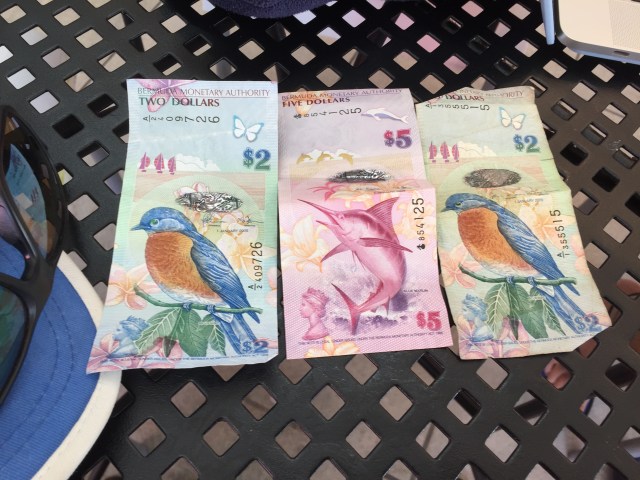
Delightfully illustrated Bermudan dollars
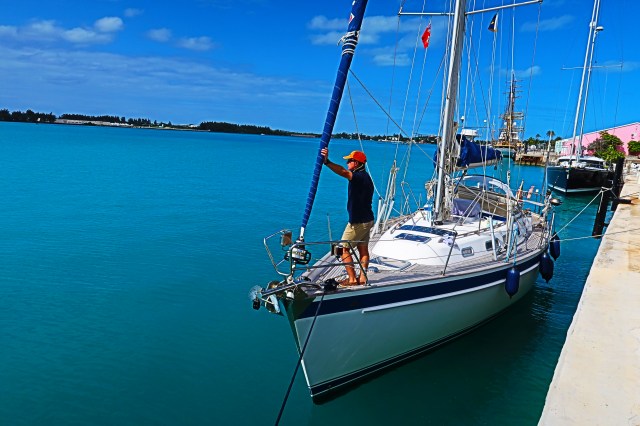
Waiting to fuel up. With the prospect of light airs, we needed to fill every single litre of fuel capacity. Spellbinder holds about 440 litres of diesel, enough for about 800 nautical miles of motoring
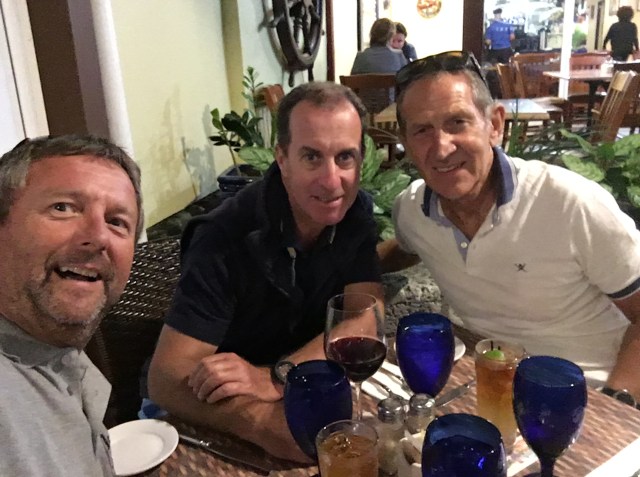
Final crew dinner before departure
We left Bermuda through the St George’s Town Cut at around midday on 27th May, heading out into light winds which allowed us to broad reach, firstly under white sails then under gennaker. It was a perfect way of easing into a long passage, with fine weather and good boat speeds.

Leaving Bermuda
The rest of the passage served up lots of light winds, calm patches, enormous amounts of animal life, and one or two mechanical challenges. For the most part we were either goose-winged in stronger winds (although nothing much above 22 knots) or flying the Parasailor, which proved invaluable in propelling us along downwind in true winds of 7-14 knots.
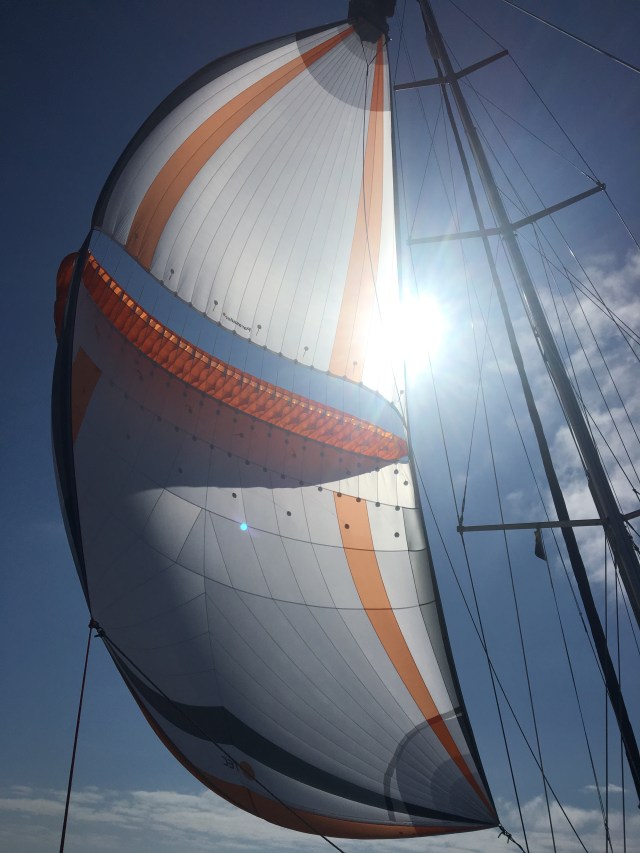
We had two long runs under Parasailor – the longest being 44 hours, all steered by the Hydrovane. It made a real difference, as otherwise we would have drifted at 2-3 knots, or would have been forced to motor
Mother Nature served up some real treats on this passage. We saw many, many dolphins and porpoises, and several whales – although the latter proved extremely difficult to photograph, as by the time you get a camera out they tend to have dived, leaving a blow-hole if you are lucky. We experienced dolphins swimming with us at night, leaving trails of phosphorescence like torpedoes darting around and under the hull. We also saw hundreds of thousands of Portuguese Men O’ War, which filled the ocean rather like the Sargasso weed had done down in the Caribbean.
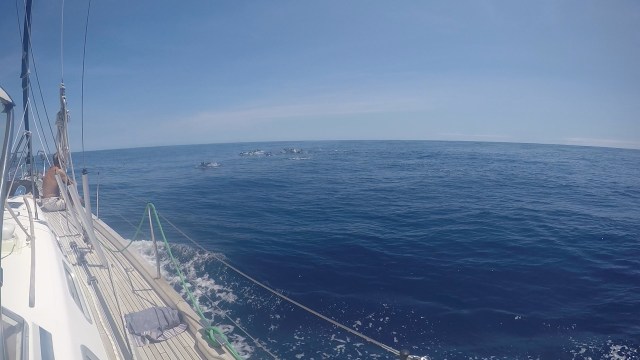
Dolphin school approaching…
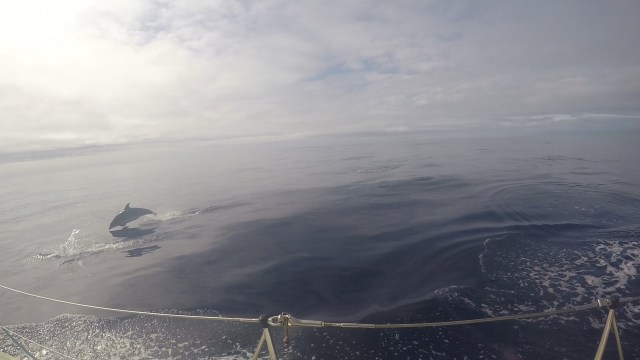
…and one of the daily displays they treated us to
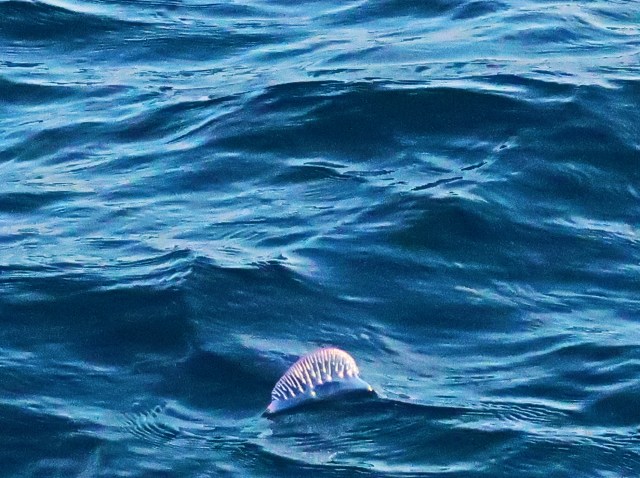
Portuguese Man O’ War. They were everywhere, wrapping themselves in our fishing line and towed generator. They seem to move along in the current, blown by their own ‘sail’
A day out of Bermuda the Raymarine autopilot failed – a bit of a blow, for while the Hydrovane will steer us effectively at all wind speeds and angles of wind, when it was calm we were obliged to hand steer. Fortunately these periods were quite short, and we learnt to use the Hydrovane to steer us when motoring or motor sailing too. The diagnosis is a broken clutch on the drive unit, which I hope to repair in the UK shortly, to allow us to use it for the final leg back to UK. Everything else worked though, so we enjoyed daily showers thanks to the watermaker, and good food thanks to the freezer.

Dismantling the autopilot drive unit
Life on board was good – we ate and drank well, established a very workable watch system and enjoyed some fine sailing in calm seas, with swell generally less than 1.5m. The SSB HF long distance radio came into its own, with daily OCC nets where we could talk to each other even when several hundred miles apart. Quite a community grew up. There was also a more formal evening check in with an American organisation which tracks yachts crossing the Atlantic, and also daily met broadcasts from the redoubtable American meteorologist Chris Parker, which proved very useful in planning our route. My good friend Julian would also email me regular weather routing advice, so we were well served.
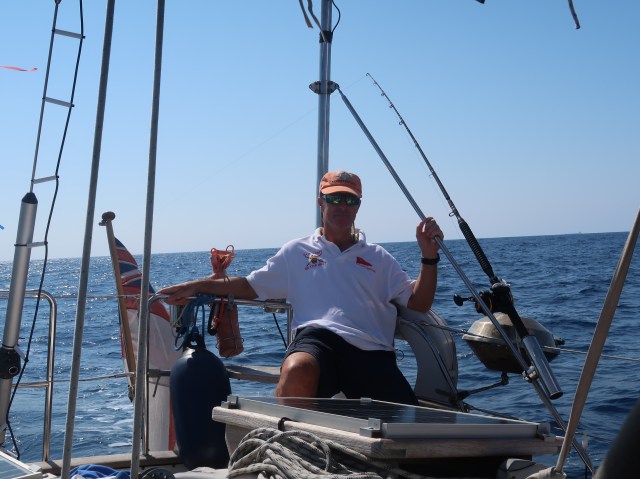
The skipper relaxing mid-ocean. Fishing was a complete disaster though!
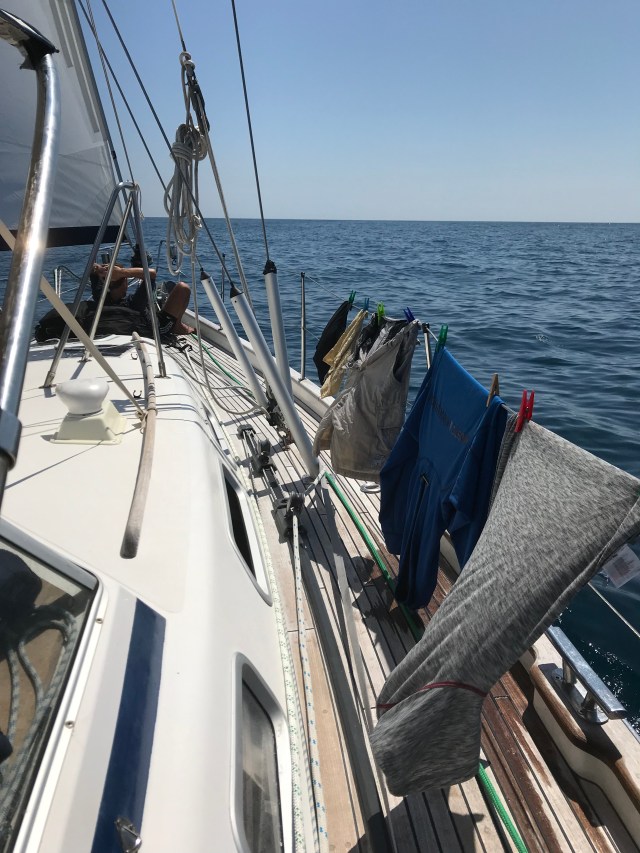
Washing day
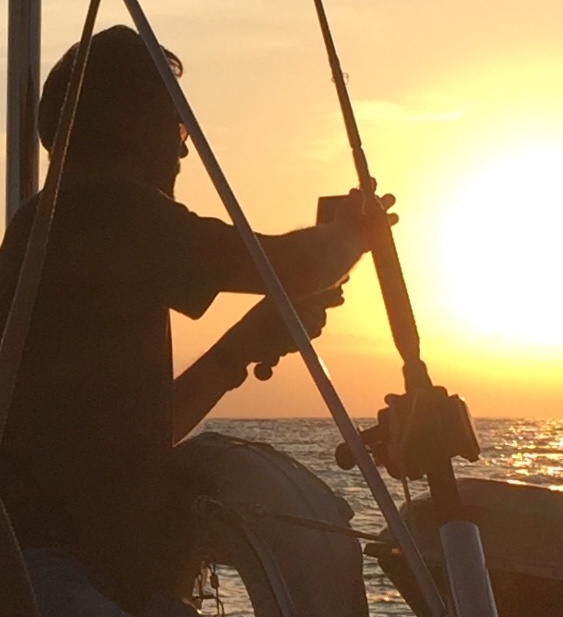
Photographing one of the many fine sunsets


Midday beers on the fore deck, under gennaker
We sighted Flores, the northernmost island in the Azores, about 50 nautical miles out. Arriving in the outer harbour about 5am, we anchored and waited for daylight, before heading into what is a cramped harbour with a major hazard in the entrance. A while back a lump of jetty fell into the water (it had been poorly constructed, and was un-reinforced). It is marked by a green starboard-hand marker, which is difficult to see in the dark. For a tired American sailor, used to buoyage the other way around (‘red right returning’) it could prove disastrous – we saw a UK yacht almost come to grief. Luckily we were aware of it. We had logged almost 1700 nautical miles, and the passage had taken 12 and a half days; of that we had sailed 9 of them, and motored the rest.

Talking on the radio as we approached Flores
Once tied up, we strolled up into the village, had some celebratory beers and flew the drone, mixing with some of the international crews who had recently crossed, some of whom we had been talking to on the SSB. It was a public holiday – no-one was about, and most things were closed, so we decided to head out the next day for the islands in the centre of the archipelago. The next blog will recount Spellbinder’s cruise of some of the Azores.

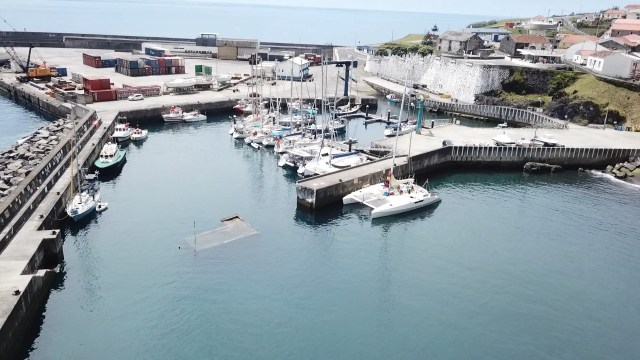
Flores harbour, as seen by the drone. You can make out the dangerous lump of jetty right in the entrance!
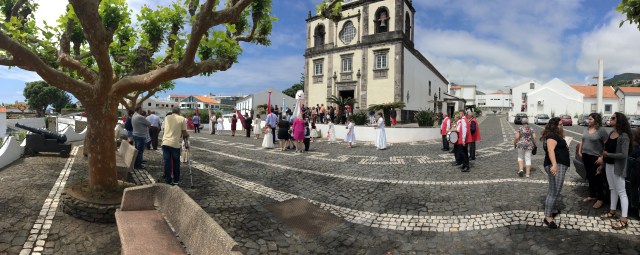
Saint’s Day parade in Flores
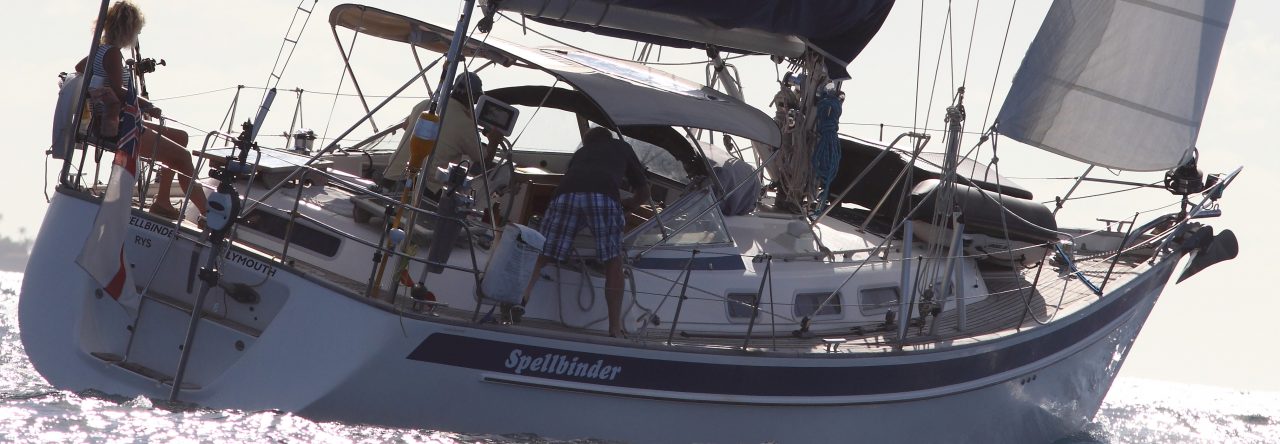
👍👍👍👍
LikeLike